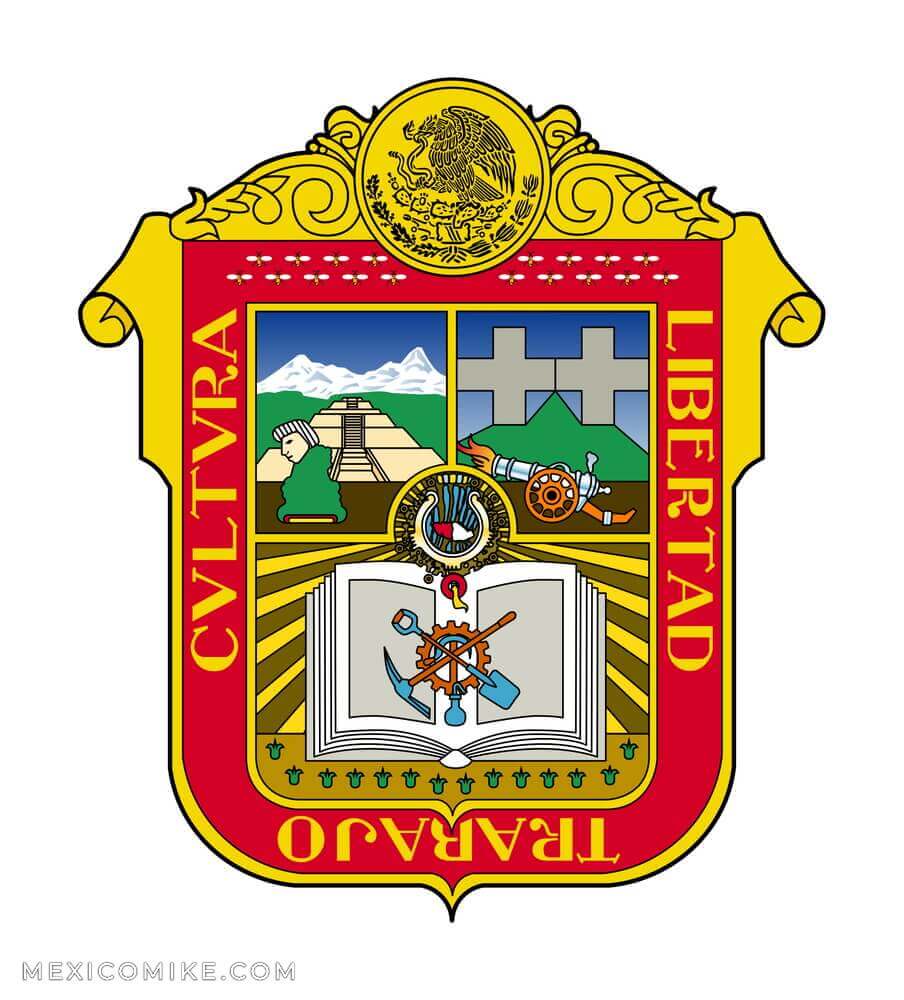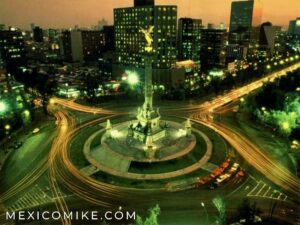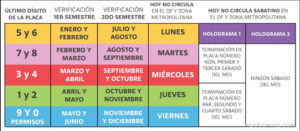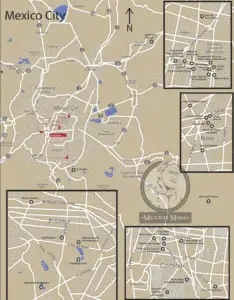Often referred to as Estado de Mexico, the state of Mexico is centrally located in the country. It is the most populous state in the country and also the most densely populated state. The state of Mexico borders the Mexican states of Morelos, Queretaro, Hidalgo, Michoacán, Guerrero, Tlaxcala, and Puebla; moreover, the state surrounds the Federal District, also known as Mexico City. The state is dense with population due to the Federal District spilling beyond its borders.
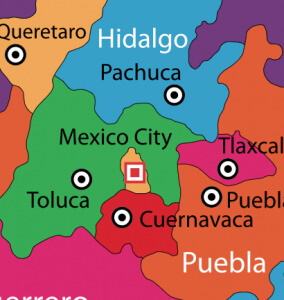
Important Facts about the State of Mexico
The state of Mexico boasts a population of 15,394,535 people. It has an area of 8,632 square miles; in terms of its area, it is only the twenty-fifth largest state. The state’s most populous city is Ecatepec de Morelos. Other major communities include Chalco, Ixtapaluca, Chimalhuacan, Naucalpan, and Valle de Bravo. The state is internationally famous for its festivals, cuisine, ceramics, and a myriad of other cultural attractions.

Geography and Landscape of Mexico State
Situated on the eastern side of the Anahuac Mesa, the state’s geography includes the Toluca and Chalco Valleys. The state is made of five distinct regions including the Valley of Mexico volcanoes, plains, mountains, the Balsas Depression, and a section of mountains and valleys in the southeastern section of the state. Over eons, the volcanoes have had an immeasurable influence on the topography of the state as most of its soil and rock are of volcanic origin. The state is also home to three river basins: the Lerma, Panuco, and Balsas; there are also many lakes in the state of Mexico such as the Laguna del Sol and Atexcapan Lake.
Although temperatures can range drastically due to elevations and between sections of the state, it mostly enjoys a moist climate that has resulted in an extraordinary array of flora. Temperate forests are found throughout the state while the southwest is home to stretches of rainforest. In spite of the state’s dense population, it still contains forty-nine protected areas; the most notable of these reserves is the Nevado de Toluca National Park. As the winter home of migrating monarch butterflies, Mexico State boasts various sanctuaries along with its neighboring state of Michoacán. Various reptiles, birds, and the raccoon-like coati also make their home in the state.

History of Mexico State
Even as early as 5000 B.C., the central region of the country of Mexico witnessed various civilizations. Many archaeologists call the region the motherland of Mesoamerican culture. Early tribes like the Olmec and Toltec thrived in the region. The Olmec, in fact, may have been the first civilization of the Americas to develop writing. Mesoamerican people of the region would eventually build such world-famous monuments as the Pyramid of the Sun and the other incredible architecture of Teotihuacan, which lies twenty-five miles from Mexico City. In the thirteenth century, northern tribes migrated into the region and later developed into the great Aztec Empire.
Under their dominion, Teotihuacan evolved from a center of trade to a center of religion. Moreover, it became the center of the empire that eventually controlled all of central and southern Mexico (the country). When the Spanish arrived in the sixteen-century, the region was rife with conflict and battle. The Spanish vanquished the Aztecs and set about to systematically and often brutally subjugate the indigenous peoples of the entire country. The Spanish colonized the state of Mexico and built haciendas where the indigenous people worked for Spain. Thousands upon thousands of indigenous people died from exposure to European diseases.

The state of Mexico became a state in 1824 after various battles for independence. Political turmoil broiled in the state for much of the nineteenth century until after the end of the Mexican Revolution. Today, the state is popular for its industry, agriculture, and tourism. Many visit the state to witness the marvelous history in the monuments of Teotihuacan.
Toluca de Lerdo
The capital is home to a wide array of cultural attractions and is under an hour away from Mexico City. Famed for its many festivals and celebrations, especially Easter, the city is also well-known throughout the nation for its chorizo and other popular dishes. The capital contains many world-class museums and the number of museums is second only to the Federal District. When visiting Toluca, travelers make a point of seeing the Plaza de los Martires, the Church of El Carmen, and the city’s cathedral.a

Other Things to See and Do
Teotihuacan: One of the world’s most famous archaeological sites, Teotihuacan is a UNESCO World Heritage Site that is especially famed for its pyramid structures. The city roots back as early as 100 B.C. and is one of the nation’s most popular tourist destinations.
Toluca’s Museo de Bellas Artes: The oldest museum in Toluca, the Museo de Bellas Artes contains works by Miguel Cabrera, Cristobal de Villalpando, and many other world-famous artists. It is located in a seventeenth-century building that was once a convent.
Malinalco: A popular tourist destination, this town is home to the spectacular Cuauhtinchan Archeological Zone compares to places such as Petra. It contains cliff structures and terraces that draw tourists from around the world.
Nevado de Toluca National Park: With Sun Lake brimming with rainbow trout in the crater of a volcano, this enchanting park is one of the country’s favorite destinations.
Aculco: This city became a settlement around 1110 A.D. Visitors come to see the natural attractions of the area that include cascades and rivers. Along with various historical structures, Aculco is also home to a bullring.
Tenancino: This enchanting town is in a mountain valley and is famous for its natural beauty. Aside from its historic churches, the town boasts many indigenous handicrafts and a thriving culture.
Ixtapan de la Sal: Many tourists favor this region and spa that has been famous for its Sacred Green Lagoon and healing waters since Aztec times. South of the capital, the area has natural beauty.
Metepec: The pottery of this picturesque indigenous village lures many travelers who also come to experience the people and their culture.
Valle de Bravo: This scenic region southwest of Toluca is Mexico’s answer to Switzerland. This mountain village is a “Pueblo Magico” and famed for its majestic beauty and outdoor activities.
If you’re heading to the Estado de Mexico from the United States of America, make sure to check out our Border Crossing page for crossing requirements.

